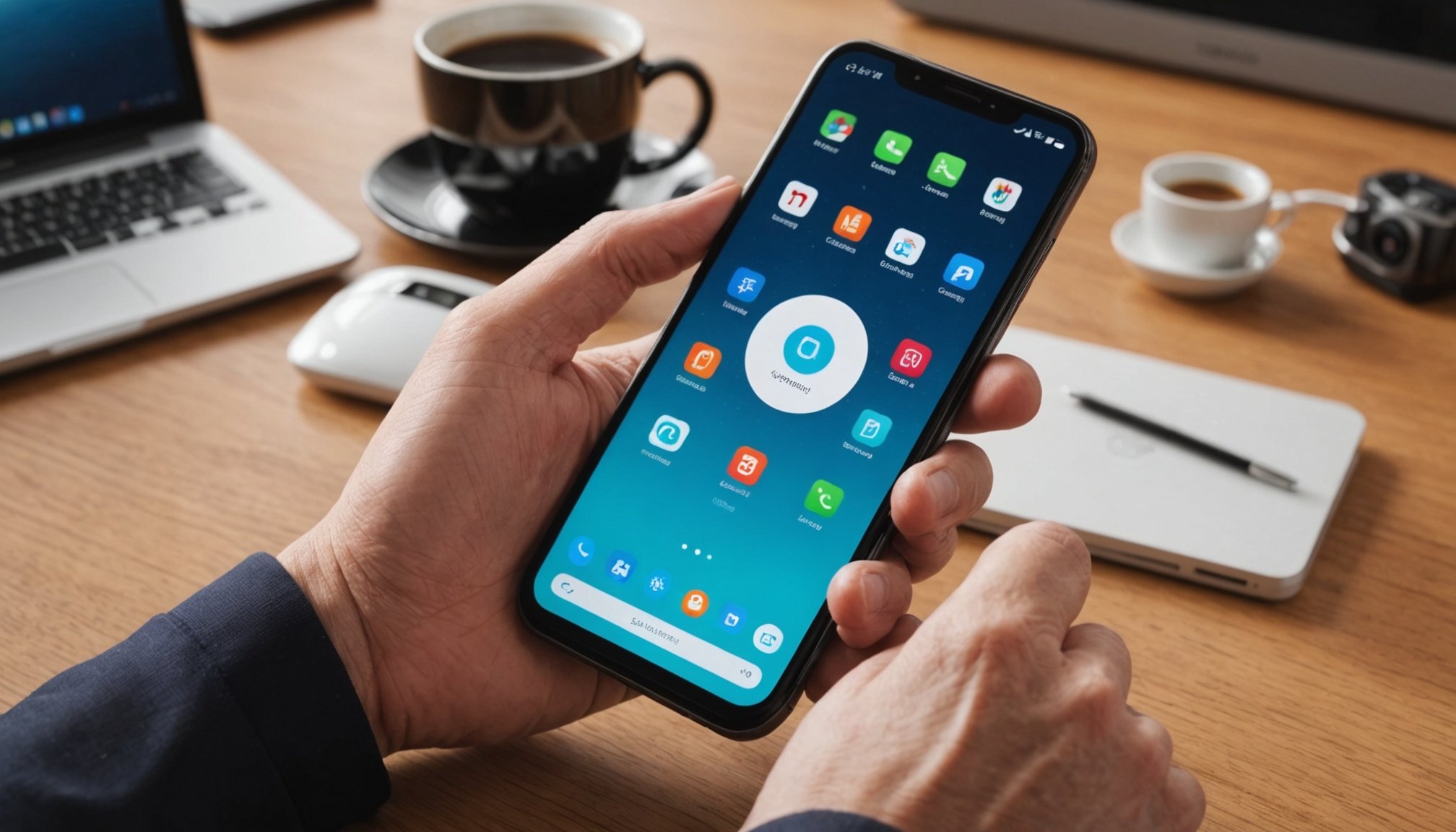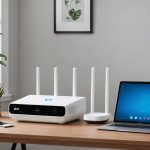Understanding Smartphone Connectivity Issues
Smartphone connection problems can significantly impact daily activities, leading to frustration and inefficiency. Among the most common issues faced by smartphone users are Wi-Fi issues and Bluetooth connectivity disruptions. These problems can originate from various factors, including outdated software, environmental interferences, or even hardware malfunctions.
Smartphone connectivity is fundamentally influenced by the device’s ability to maintain stable interactions with networks and peripherals. Factors such as signal strength, device compatibility, and environmental obstacles can directly affect connectivity quality. Regular updates and proper device maintenance often play crucial roles in sustaining optimal connectivity.
Also to see : Exploring the influence of smartphone screen size on user experience and convenience
Timely troubleshooting of these connectivity issues is crucial. Taking quick and effective action can prevent a minor inconvenience from escalating into a significant disruption. Techniques such as resetting connections, adjusting network settings, and ensuring devices are within the recommended range can resolve most problems.
By understanding and addressing these smartphone connection problems, users can not only improve their personal device performance but also enhance overall productivity and experience. Exploring efficient solutions is a proactive approach to ensuring connection stability in various contexts.
Also to read : Top smartphone features for the ultimate movie and tv streaming experience
Troubleshooting Wi-Fi Connection Problems
Modern smartphones often grapple with Wi-Fi connectivity issues, but tackling them efficiently helps in restoring seamless connectivity. Understanding key troubleshooting steps can drastically improve user experience.
Checking Network Settings
The first step in Wi-Fi troubleshooting is to ensure all network settings are correctly configured. This includes verifying that you’re connected to the correct network and checking the password and security settings. Misconfigurations here often account for connectivity disruptions. Ensuring settings align with your network’s requirements is crucial in maintaining a stable connection.
Restarting Devices
Restarting your smartphone and router can be an effective way to improve Wi-Fi connectivity. This simple action clears temporary glitches and refreshes network paths. Often, power cycling your devices resolves unforeseen connection problems by allowing them to establish clean connections upon reboot.
Updating Router Firmware
Keeping your router’s firmware updated is instrumental in resolving Wi-Fi issues. Firmware updates address known bugs and add new features, ensuring compatibility with newer devices and software. These updates enhance network performance, leading to improved router settings and overall connectivity.
Applying these troubleshooting methods regularly can mitigate many common Wi-Fi issues faced by smartphone users, ensuring that connectivity remains uninterrupted and efficient.
Enhancing Bluetooth Connectivity
Bluetooth connectivity is vital for seamless data sharing and device interaction, yet users often encounter Bluetooth issues such as pairing problems and device range limitations. These challenges can be frustrating but are generally manageable with the right approaches.
Ensuring Compatibility
Compatibility between devices is crucial in resolving pairing problems. Ensure both the smartphone and the Bluetooth device support the same Bluetooth version or profile. Incompatible devices may fail to establish a connection, or even if connected, might not share functionalities effectively.
Device Location and Proximity
Devices connected via Bluetooth should ideally remain within an optimal range to maintain a stable connection. Environmental interferences such as walls or other electronic devices can contribute to device range limitations. Keeping the devices within the recommended proximity minimizes signal loss.
Resetting Bluetooth Settings
Performing a reset on Bluetooth settings can often clear hidden glitches. This process re-establishes the connection parameters and resolves mismatches that may have developed. Access the settings menu on your smartphone, select Bluetooth, and opt to reset. This action often resolves persistent Bluetooth issues, restoring effective and smooth device interactions.
These methods ensure reliable Bluetooth connections, enhancing user satisfaction and productivity in device interactions.
Utilizing Connectivity Apps and Tools
In today’s fast-paced digital world, having stable smartphone connectivity is crucial. Connectivity apps are incredibly useful for diagnosing and solving smartphone connection problems. These tools can automate and simplify troubleshooting processes for Wi-Fi issues, Bluetooth connectivity, and more.
Features in Connectivity Management Tools
When selecting a connectivity management tool, prioritize features like network analysis, automatic optimization of router settings, and real-time connection monitoring. Some apps also offer signal boosters that enhance connectivity by amplifying signal reception, which is particularly helpful in areas with weak coverage.
Popular Apps and User Experiences
Several apps, like Wi-Fi Analyzer and Bluetooth Auto Connect, have garnered positive user feedback for their efficiency in managing different connectivity issues. Wi-Fi Analyzer, for instance, provides insights into Wi-Fi connectivity problems by analysing signal strength and suggesting optimal channels. Meanwhile, Bluetooth Auto Connect helps in quickly resolving pairing problems by automatically managing connections. Users often praise these apps for their ease of use and effectiveness.
Leveraging these connectivity apps enables users to maintain optimal device performance, ensuring seamless interactions with their networks. By selecting the right tools, users can significantly reduce the frustrations associated with connectivity disruptions.
Preventative Measures for Stable Connections
Maintaining stable smartphone connectivity is crucial for uninterrupted communication and productivity. Implementing preventative measures ensures long-term connectivity health and minimizes disruptions.
Regular Software Updates
Regular software updates are vital for maintaining seamless connectivity. These updates often include patches that fix known connectivity issues. By keeping your smartphone’s operating system and apps up-to-date, you ensure compatibility with network technologies and enhanced connection stability.
Optimizing Device Settings
Customizing device settings can significantly boost connectivity performance. Ensure Wi-Fi and Bluetooth settings are properly configured according to usage needs. Activating power-saving modes might disable some connectivity features, so it’s crucial to adjust these settings when optimal performance is required.
Networking Best Practices
Adopting networking best practices can help sustain robust connections. Position routers centrally in your home to minimize Wi-Fi issues, and regularly monitor environments for electronic interference that may cause Bluetooth connection problems. Conduct quarterly checks on your network’s security settings to thwart unauthorized access.
By integrating these preventative strategies into your routine, you ensure that your smartphone remains reliably connected. The key is to be proactive, regularly assessing and updating device settings and software as part of your connectivity maintenance.
Frequently Asked Questions
Understanding smartphone connectivity is a common concern among users facing issues like Wi-Fi connectivity and Bluetooth connectivity problems. Here are some frequently asked questions to assist users in troubleshooting effectively.
How can I improve my smartphone’s Wi-Fi signal?
Improving your Wi-Fi signal involves several steps:
- Ensure you’re connected to the correct network and that your network settings are properly configured.
- Restart your smartphone and Wi-Fi router to clear out any temporary connection glitches.
- Update your router’s firmware to take advantage of bug fixes and performance enhancements.
Why won’t my smartphone connect to a Bluetooth device?
Pairing problems usually arise from incompatibility or interference:
- Check that both devices support the same Bluetooth version or profile.
- Minimise obstacles and maintain a close device range for stable connections.
- Reset Bluetooth settings to clear hidden glitches, allowing the devices to reconnect smoothly.
How do I address mobile data connection issues?
For mobile data troubleshooting:
- Verify your data settings are correctly configured in network settings.
- Ensure your SIM card is functioning properly; consider replacing it if necessary.
- Adjust network modes to improve signal strength, selecting the best-suited option available.
These tips are aimed at fostering better connectivity and simplifying the troubleshooting process for users.
Optimizing Mobile Data Connection
Stabilising mobile data connectivity is essential when Wi-Fi is unavailable. Addressing network settings can significantly enhance your mobile performance.
Checking Data Settings
First, ensure your mobile data settings align with your service provider. Incorrect network settings often lead to connectivity problems. Examine your Access Point Name (APN) settings; these parameters must match those provided by your carrier. Inconsistencies here can disrupt the data flow, causing frequent disconnections or slow speeds.
Ensuring SIM Card Functionality
A malfunctioning SIM card can be a silent culprit in connectivity troubles. Inspect your SIM for physical damage and ensure it fits securely in the tray. A well-functioning SIM card underpins your device’s ability to connect to the data network effectively.
Managing Network Modes
Selecting the appropriate network mode enhances signal strength and connectivity stability. Smartphones typically offer different modes, such as 2G, 3G, LTE, or even 5G. Adjusting to a mode that provides the strongest connection based on your location can improve data speeds and reduce connectivity issues. Switching between these modes can also resolve temporary disruptions caused by congested networks.





